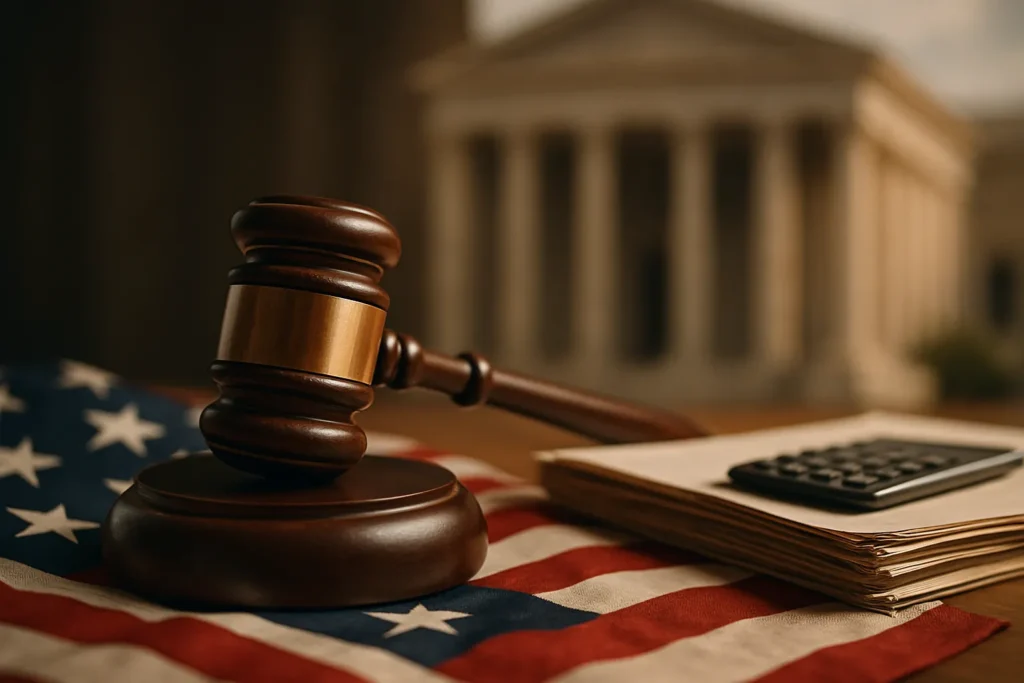Beneath the Legal Wrangling: A Test of Executive Power
Picture two family-run businesses in Illinois, both peddling educational and pet toys, awakening to the cold reality of sudden global tariffs—an “extraordinary Executive Branch power grab” that could tip their livelihoods into chaos. Their lawsuit, formally known as Learning Resources, Inc. v. Trump, thrusts a deceptively sleepy-sounding federal statute, the International Emergency Economic Powers Act (IEEPA), into the hot glare of a constitutional spotlight. The Trump administration’s invocation of IEEPA to justify sweeping tariffs on imports isn’t just a trade move; it’s a bold reimagining of presidential power.
This week, rather than racing toward a Supreme Court showdown, the Trump Justice Department urged the justices to “not leapfrog” the appeals process. Instead, they want the highest court in the land to keep its distance—at least for now—arguing that the lower courts should have first crack at resolving thorny questions of jurisdiction and executive authority. The stakes: nothing less than the future contours of presidential power over the global economy.
Harvard legal scholar Martha Field offers a stark assessment: “When a president deploys emergency powers for economic policy, rather than war or crisis, it muddles the balance of powers. The risk isn’t just runaway tariffs—it’s a systemic weakening of Congressional oversight and the rule of law.”
Tariffs, Toymakers, and a Chilling Judicial Pattern
The backdrop for this dispute reads like a case study in how judicial appointments can ripple through American life. The path to the Supreme Court was hardly neutral. After a federal district judge issued a preliminary injunction against the tariffs—then hit pause for two weeks to let the government appeal—the matter landed before a panel of the U.S. Court of Appeals for the D.C. Circuit. All three judges? Appointed by Trump during his first term. The panel promptly stayed the injunction, leaving the tariffs intact and signaling to many progressives a broader, deep-seated pattern of conservative judicial consolidation.
Why should Americans worry about these technical legal footnotes, especially if they’re not exporting toys? Because the central question is whether Congress’s careful checks on presidential authority can withstand the current tide of executive ambition. As historian Heather Cox Richardson reminds us, the IEEPA was designed in the 1970s as an emergency escape valve—not a carte blanche to upend global trade and the livelihoods of small businesses with the stroke of a pen.
Beyond the courtroom maneuvering lies a direct impact on real families. Laura Green, CEO of one of the companies bringing the lawsuit, relayed to NPR just last month, “We employ dozens of people—all of them scared about layoffs if these tariffs persist. Our fight isn’t only for our businesses—it’s for Main Street communities that depend on stable, consistent rules.”
“When a president deploys emergency powers for economic policy, rather than war or crisis, it muddles the balance of powers. The risk isn’t just runaway tariffs—it’s a systemic weakening of Congressional oversight and the rule of law.”
– Martha Field, Harvard Law
Solicitor General D. John Sauer’s argument further clouds the playing field: He maintains that such cases should bypass district courts entirely and go straight to the U.S. Court of International Trade, adding another procedural hurdle for everyday businesses trying to make their voices heard. When access to the justice system is limited by legal fine print, democracy itself starts to look exclusionary.
Where Does Executive Authority End?
A closer look reveals critical echoes of past overreaches. The debate over the limits of presidential power has long animated legal history, from FDR’s internment orders in World War II to Nixon’s attempts to shield the executive from Congressional inquiry. In each case, the courts eventually served as a bulwark—a check on hubristic authority. But the Trump administration’s ongoing bid to keep the Supreme Court out of this fight, after drawing a favorable appellate panel, raises thorny questions about forum-shopping and the strategic use of judicial process to shield controversial policies from meaningful review.
What does this mean for industries beyond toymakers? The consequences ripple far and wide. According to a recent Pew Research study, nearly half of U.S. manufacturing jobs are exposed to some level of trade disruption from unpredictable tariffs. The uncertainty upends supply chains, squeezes small business profit margins, and reverberates through the workforces supporting them. Markets—contrary to right-wing talking points—aren’t “fixed” by saber-rattling and government-by-edict. They require stability, transparency, and a commitment to the rule of law.
It’s tempting to view this legal skirmish as a niche, technical dispute. In reality, it’s a canary in the coal mine for democratic accountability. As former Justice John Paul Stevens warned in Hamdan v. Rumsfeld, “Executive power unchecked, especially in times labeled ‘emergencies,’ ultimately imperils not only the separation of powers, but the liberties of ordinary Americans.”
The case now heads toward an en banc hearing at the D.C. Circuit, with the Supreme Court waiting in the wings. Whether or not the justices intervene immediately, the lesson for progressives is clear: The fight to rein in runaway executive authority demands constant vigilance, not just from the courts, but from an electorate that refuses to accept government by whim. It’s not just about tariffs, toymakers, or obscure statutes—it’s about the fundamental promise of balance, fairness, and participation that underpins American democracy.

